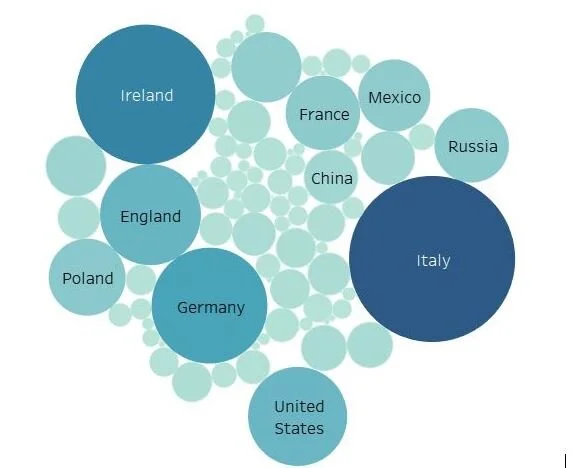Larchmont-Mamaroneck roots:
Everything to know about local ancestries
Italian, Irish and German are the most numerous nationalities in Larchmont-Mamaroneck, but 90 ethnicities are represented, according to U.S. Census estimates.
Maps and charts on this page break out the latest estimates, from 2019, as well as those back to 1970.
But first you can view an April 28, 2021, Zoom presentation on the largest nationalities and the fastest growing ones, and where they live:
Below you'll find:
Ethnicities by number and community
An interactive map showing where in Larchmont-Mamaroneck each nationality was most numerous
A map showing our roots across the world.
Nationalities that are growing fastest.
Here are the ethnic roots by size and community:
(Tap the link above if you can’t see the chart below)
Largest: The largest current nationalities vary by community, with Italian first in Mamaroneck Village, Larchmont and Rye Neck and Irish first in Mamaroneck Town.
Map: Where we live, by nationality
(Tap the link above if you can’t see the map below)
Other nationalities with significant numbers include German, English, American, Guatemalan, Russian, Polish, French and Mexican.
Map: Where our roots are in the world
(Tap the link above if you can’t see the map below)
Fastest growing: Guatemalan, Japanese and Philippine ancestries saw the biggest growth in numbers in Larchmont-Mamaroneck as a whole between 2010 and 2019, but the leaders were different in different communities. Mamaroneck Town recorded its biggest growth in residents of Swedish, Chinese and Greek ancestries.
Chart: Fastest growing ethnic groups.
(Tap the link above if you can’t see the chart below)
Sources
The estimates are projected based on responses to a question about ancestry in the U.S. Census long form in 1980, 1990 and 2000 and since then on the Census Bureau’s American Community Survey conducted between the censuses, in this case in 2006-10 and 2015-19. About one in six households receives the census long form and one in 38 households each year is invited to take part in the American Community Survey.
The ancestry question on the 2000 U.S. Census long form
In the census for 1970 and earlier, the government only gathered ancestry information on people who were foreign born or whose parents were. From 1980 to 2000, the government asked all long-form filers about ancestry and estimated the total population’s ethnicities based on that sampling.
More information
National HIstorical Geographic Information System, housed at the University of Minnesota, provides free online access to summary statistics and mapping files for U.S. censuses and other nationwide surveys from 1790 to the present. It has more detailed breakouts than the U.S. Census Bureau, and they’re easier to search and download.
U.S. Census Bureau has issued summary reports, often with detailed breakdowns of local statistics.
National Archives has microfilms of older Census records and tips for researching, especially those seeking records on ancestors.
More Mamaroneck history
Train station history, restoration virtual tour
Grand Central’s ceiling
Delancey Cemetery restoration dedication
History of Harbor Island
Civil War untold story


